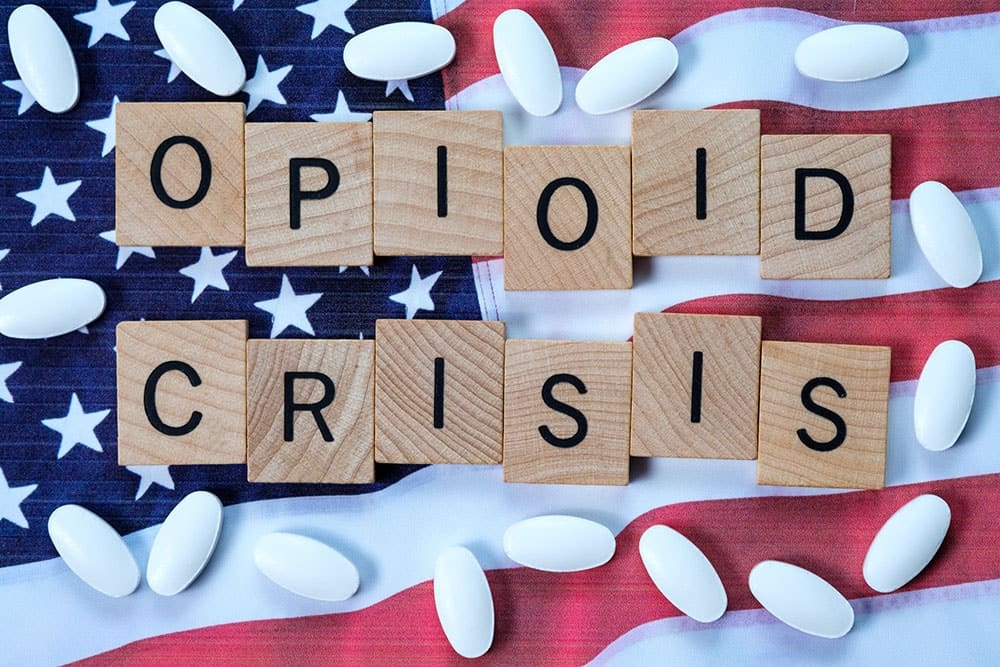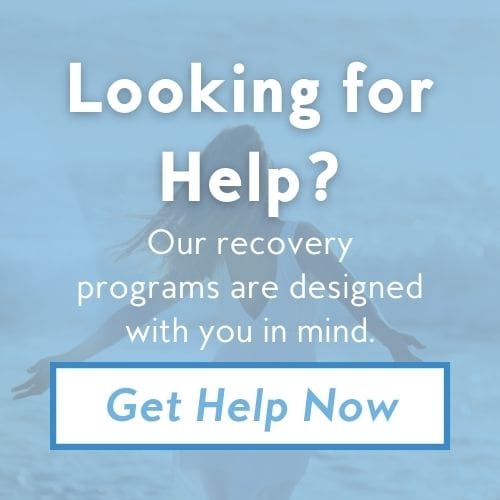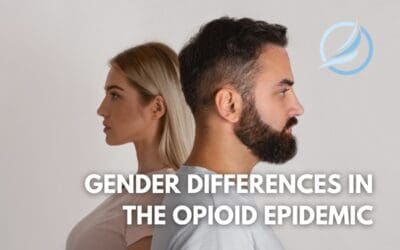The Opioid Epidemic in Maryland
Opioids, also called opiates, are drugs that come from the opium poppy plants and their compounds. These substances work by acting directly on opioid receptors of the brain, also called “pleasure receptors”, changing how the brain perceives and feels pain. Because of this, labs started creating drugs that have opiates as their main ingredient, which are legal and can be prescribed for pain management. However, the reason why these drugs require extra care and monitoring is exactly because of the sensation of pleasure they can provide, which can cause addiction in the long term.
Right now, a majority of states in the U.S. are going through what many are calling an opioid epidemic. To paint a better picture, it is important to understand that the country is facing what is considered the “third wave” of this crisis, where the main culprit is synthetic opioids. In the past two waves, the drugs causing the most lethal effects were prescription opioids and heroin, respectively. Now, as synthetic opioids gain more and more users, one of the drugs that seem to be causing overdose more often is illicit fentanyl.
The state of Maryland has been no exception to this crisis or the influence of fentanyl over communities. Some of the major cities like Baltimore and Frederick have registered ever-growing numbers since fentanyl use peaked all over the country, according to research and studies made in the last few years.
Facts About The Opioid Crisis
Most information available about the epidemic in Maryland only covers occurrences up until 2018.
1) Substance-related deaths have been increasing in the state of Maryland since 2010, and have been continuously going up every year.
2) 89% of the substance-related deaths reported involved opioids, including both prescription and illicit opioids.
3) While heroin was the most lethal among opioids that were abused in the state since 2012, the number of fentanyl-related deaths surpassed heroin-related ones in 2016, and it’s been the main culprit among opioids ever since.
4) Heroin-related deaths have been decreasing, but still, reach staggering numbers. Its victims have been more often white, males, and of ages 45-54.
5) Fentanyl seems to be more popular among younger users, since most victims are aged between 25 and 34, and that has been the case since fentanyl use spiked in 2016. As for race and gender, most lethal cases involved white males.
6) More often than not, victims of alcohol-related deaths also had traces of opioids found in their systems – around 80% of cases, in fact.
7) For opioid-related deaths, even deaths linked to heroin also had fentanyl foul play involved, as 87% of them occurred in combination with fentanyl. It is not unusual for fentanyl to be mixed in with other substances in an attempt to make them seem more potent – and this sometimes happens before they are bought, without the buyer knowing.
8) As of 2018, the city that reported the worst numbers for opioid-related deaths was Baltimore City, as more than 50% of all opioid-related deaths from 2007 to 2018 in Maryland were concentrated there.
9) There has been a rise in the number of opioid-related deaths for all age groups analyzed in government research since 2016, from “25 and under” to “55 and over”. Although some have come down after the sudden spike, they have not come back down to the numbers registered before 2016.
10) Even for deaths where other substances were involved, a great deal of them occurred in combination with fentanyl: 82% of cocaine-related deaths; 81% of methamphetamine-related deaths; 72% of alcohol-related deaths; and 56% of benzodiazepine-related deaths all also involved fentanyl.
There is much to consider when discussing opioid addiction in Maryland. First, the social context of cities like Hagerstown must be taken into account. With the shifting scenario of cities caused by the rapid spread of technology, many people and places have been directly affected by unemployment as well as economic decay. These issues bring on feelings of hopelessness and purposelessness, which in turn, can make many people try to cope by using unhealthy habits such as substance abuse.
Secondly, trends can affect the behavior of residents from a specific area. Studies have shown that drug abuse tendencies in cities with easy access to other states can be influenced by what people are consuming in other towns, even if they are not necessarily the major city or the capital in said state. Other states like Virginia, Pennsylvania, and West Virginia have indirectly dictated some of the drugs and substance trends that occurred in areas of Maryland since the 90s.
Another issue that must be addressed is family history and psychological factors. It is true that a number of psychiatric traits are in fact inherited genetically, so previous family problems with certain addictions put someone at risk of developing similar issues. That is not to say that only those with past family connections to addiction should be careful since other psychiatric disorders might also trigger behaviors that lead to substance abuse in what are called co-occurring disorders.
Back in 2015, about 50% of people who reported suffering from a psychiatric illness ended up not receiving treatment for such conditions, like depression. This is a major problem since there has been research proving the connection between mental illnesses and addiction. If untreated, it is not unusual for people struggling with the symptoms of a psychiatric disorder to end up consuming drugs or alcohol so as to “relieve their pain”.
Symptoms – From Abuse to Withdrawal
Even though opioids have long been used for pain management, after prolonged use, it actually brings on more negative effects than positive ones. As substance abuse continues, someone who has become addicted will require higher and higher doses of the drug to get the same effective high they once did. This is not just a problem financially in the long run, but that means that there will be more damage done to the body since the quantity taken is larger.
The way and intensity in which the drug will act varies from person to person, but generally, the most common signs and consequences of drug abuse to keep an eye out for are:
- Changes in social circles and hangout spots
- Spending time alone or avoiding family and friends, and/or losing interest in activities
- Increasingly poor personal hygiene
- Changes in eating habits (eating too much or too little)
- Being energetic, talking fast, not necessarily making sense
- Changes in mood (nervous, cranky, or moody)
- Changes in sleep cycles (sleeping too much or too little)
- Not keeping to the usual schedule, even missing appointments
- Feeling often tired or sad
- Experiencing legal and/or financial problems
If a person decides to quit, once they actually do, their body will start displaying other symptoms as well. While it is a necessary process, it might not actually be an easy one. The effects and the duration might depend on the dose and the frequency in which a user was taking the drug, but withdrawal symptoms for opioids include:
- Agitation, nervousness, and/or anxiety
- Accelerated heart rate and/or hypertension
- Muscle aches
- Restlessness and tiredness
- A runny nose
- Fever and/or sweating
- Chills and goosebumps all over
- Nausea, diarrhea, and/or vomiting
- Depression
- Drug craving
For short-acting opiates, it is possible to experience these symptoms within the first 6-12 hours after the last dose. As for long-acting alternatives, withdrawal symptoms might take up to 30 hours to start. The more serious effects, called “late symptoms”, however, are the last five mentioned on the list. Those will take about 72 hours to manifest themselves but can last up to a week.
There Is Hope For Ending Addiction
Even though the numbers reported for the opioid crisis might look scary, it is also important to focus on what can be done rather than solely focus on the problem at hand. While there is a growing number of users and overdose cases, there are ways to help these alarming rates go down, and it can start with you.
If you or a loved one have been affected by the influence of substance abuse and the opioid epidemic, remember that there is always help available for those who need it most. We at The Freedom Center have kept ourselves informed and updated in order to best deal with all types of scenarios of opioid abuse, and our multiple programs have helped many through the years, as they go beyond helping with detoxification.
From clinical treatment to aftercare support, we can assure you that our teams will be by your side every step of the way in your journey to become free of addiction. Visit our website to find out more about how we can help, and contact us at your convenience. You can also call us at (888) 530-5023. We will be glad to answer any and all questions you might have so you can make the first decision that will change your life forever – saying no to the old you, and hello to your healthier self.
References:
https://www.cdc.gov/drugoverdose/epidemic/index.html
https://bha.health.maryland.gov/OVERDOSE_PREVENTION/Pages/Data-and-Reports.aspx
http://www.cesar.umd.edu/cesar/pubs/19990004.pdf
https://www.samhsa.gov/data/sites/default/files/2015_Maryland_BHBarometer.pdf

































